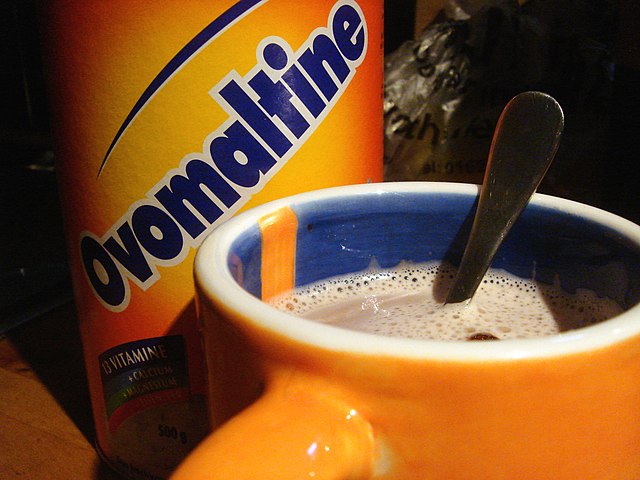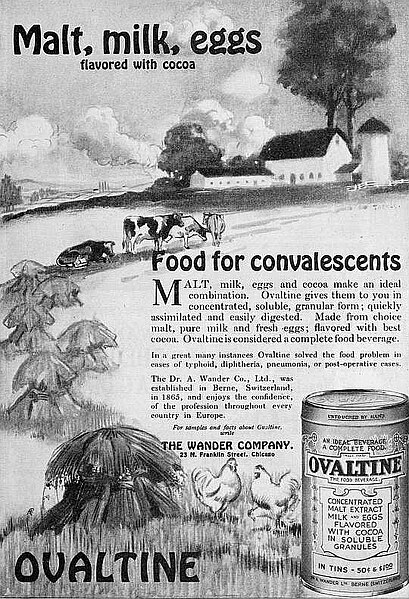Ovaltine is a brand of milk flavoring product made with malt extract, sugar, and whey. Some flavors also have cocoa. Ovaltine, a registered trademark of Associated British Foods, is made by Wander AG, a subsidiary of Twinings, which acquired the brand from Novartis in 2002, except in the United States, where Nestlé acquired the rights separately from Novartis in the late 2000s.
Ovaltine jar and cup, both in the distinctive orange colour
Swiss chemist and pharmacist Albert Wander (1867–1950) developed Ovomaltine in 1904.
Ovaltine advertisement in an American medical journal, 1917
Ovaltine in crystalline form
Malt is a cereal grain that has been made to germinate by soaking in water and then stopped from germinating further by drying with hot air, a process known as "malting".
Malted grain is used to make beer, whisky, malted milk, malt vinegar, confections such as Maltesers and Whoppers, flavored drinks such as Horlicks, Ovaltine, and Milo, and some baked goods, such as malt loaf, bagels, and Rich Tea biscuits. Malted grain that has been ground into a coarse meal is known as "sweet meal".
A handful of malted barley, the white sprouts visible
Beer malt varieties from Bamberg, Germany
Malted barley
Samanu decorated with pistachio








